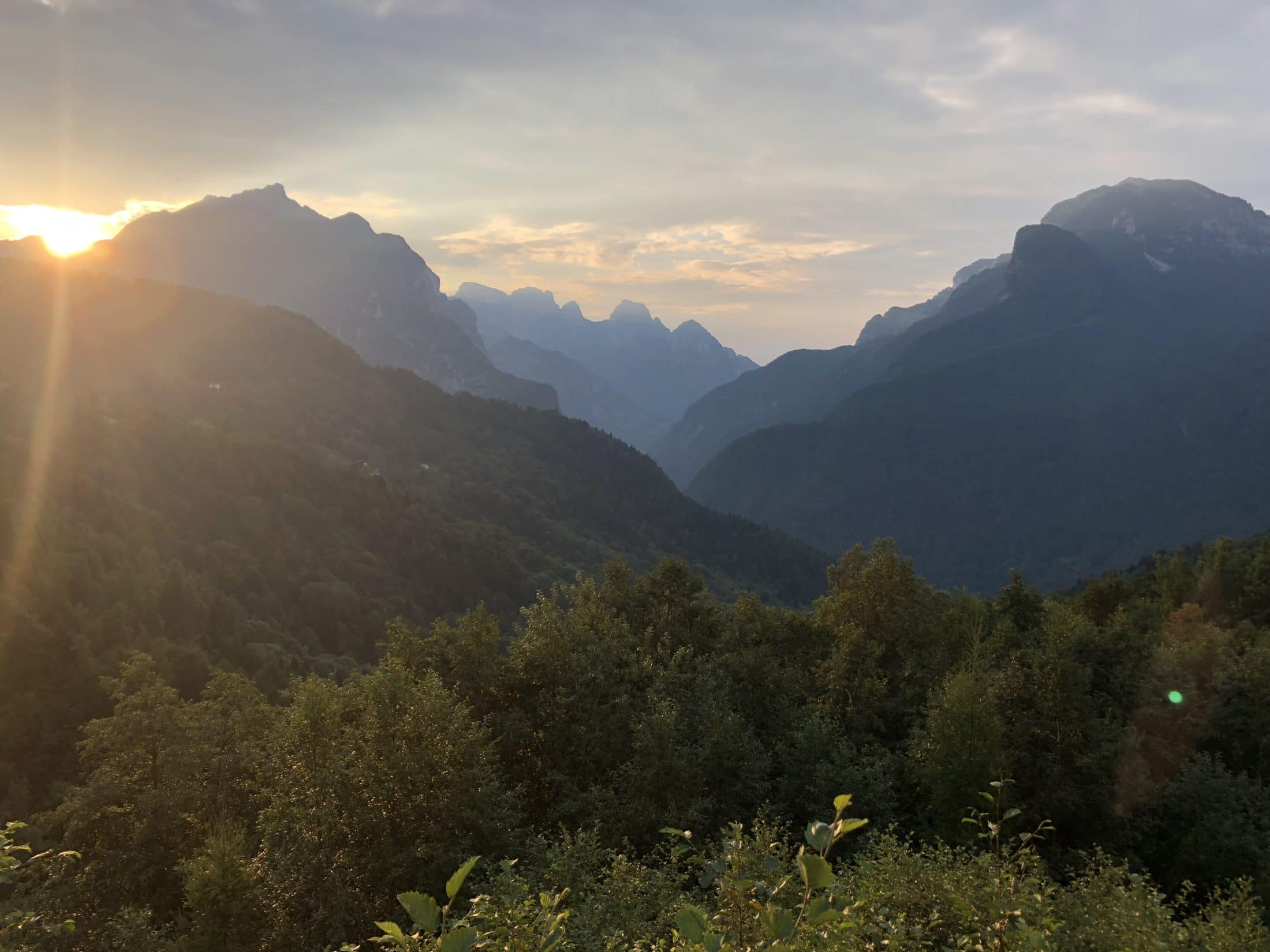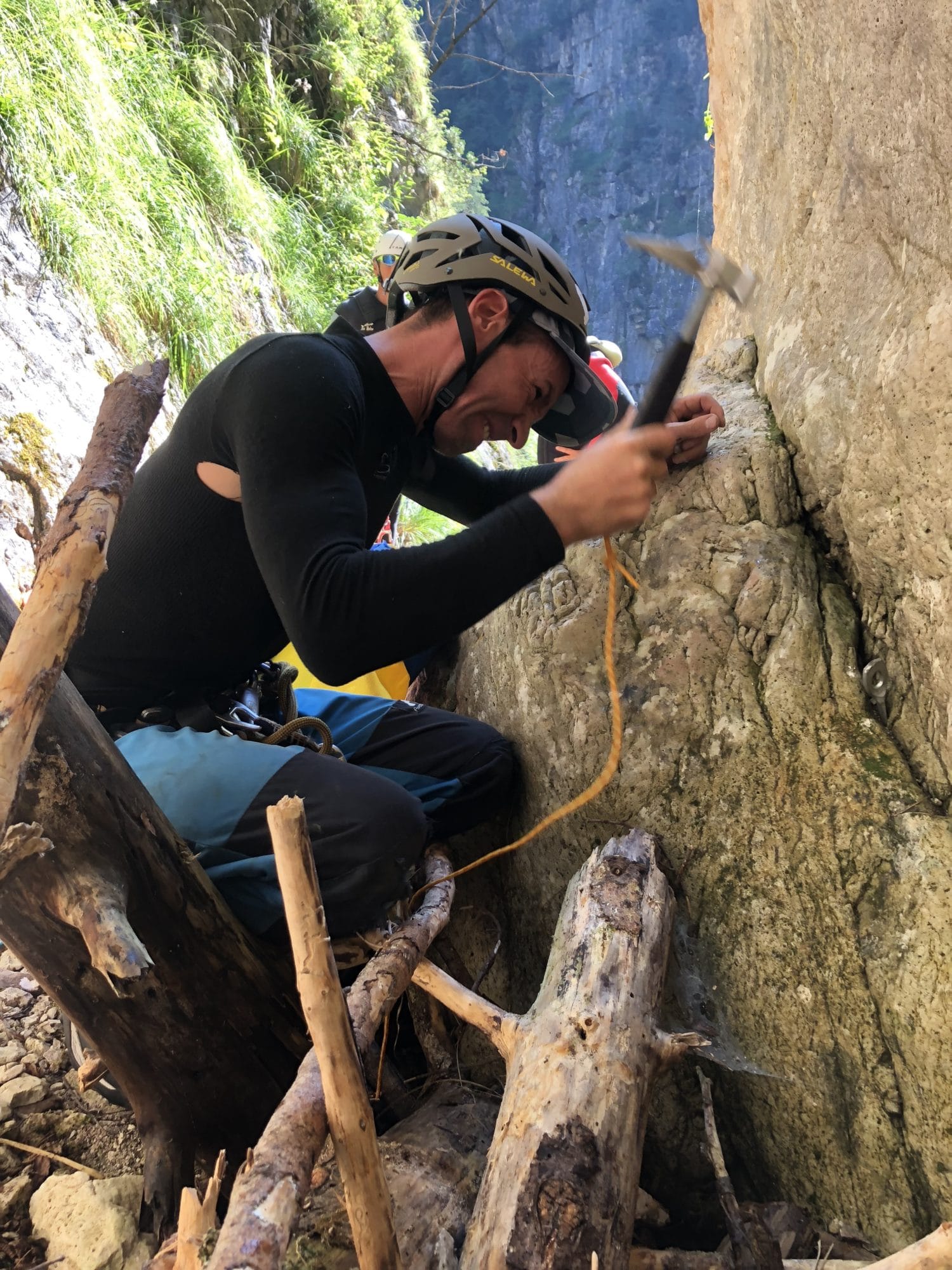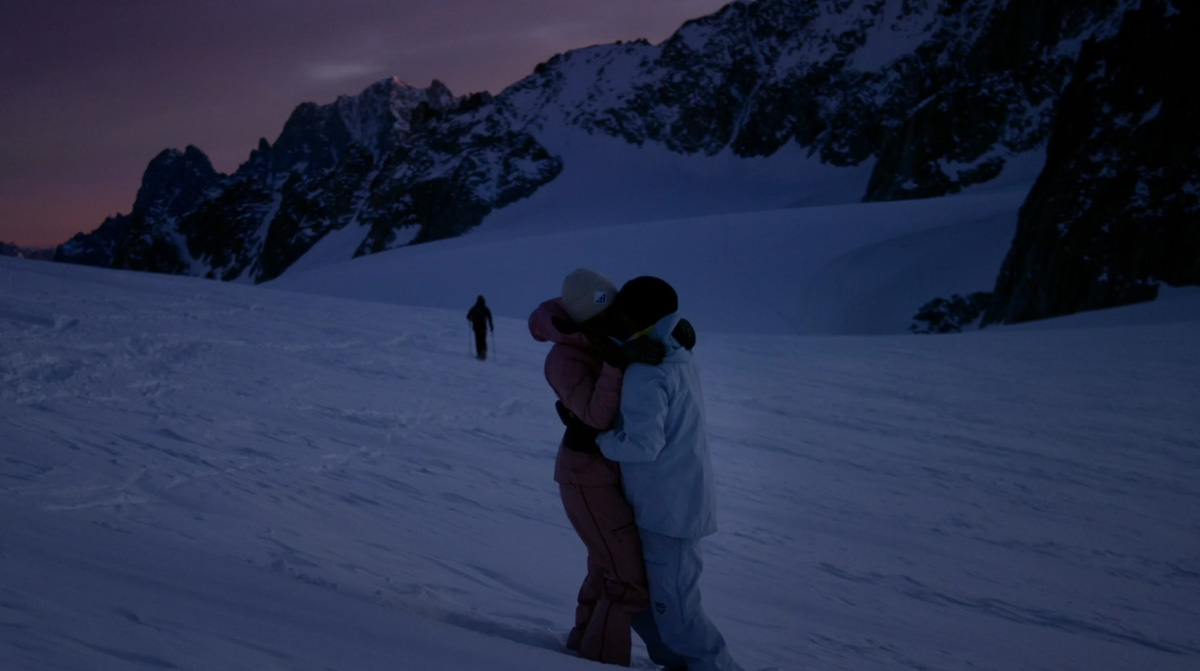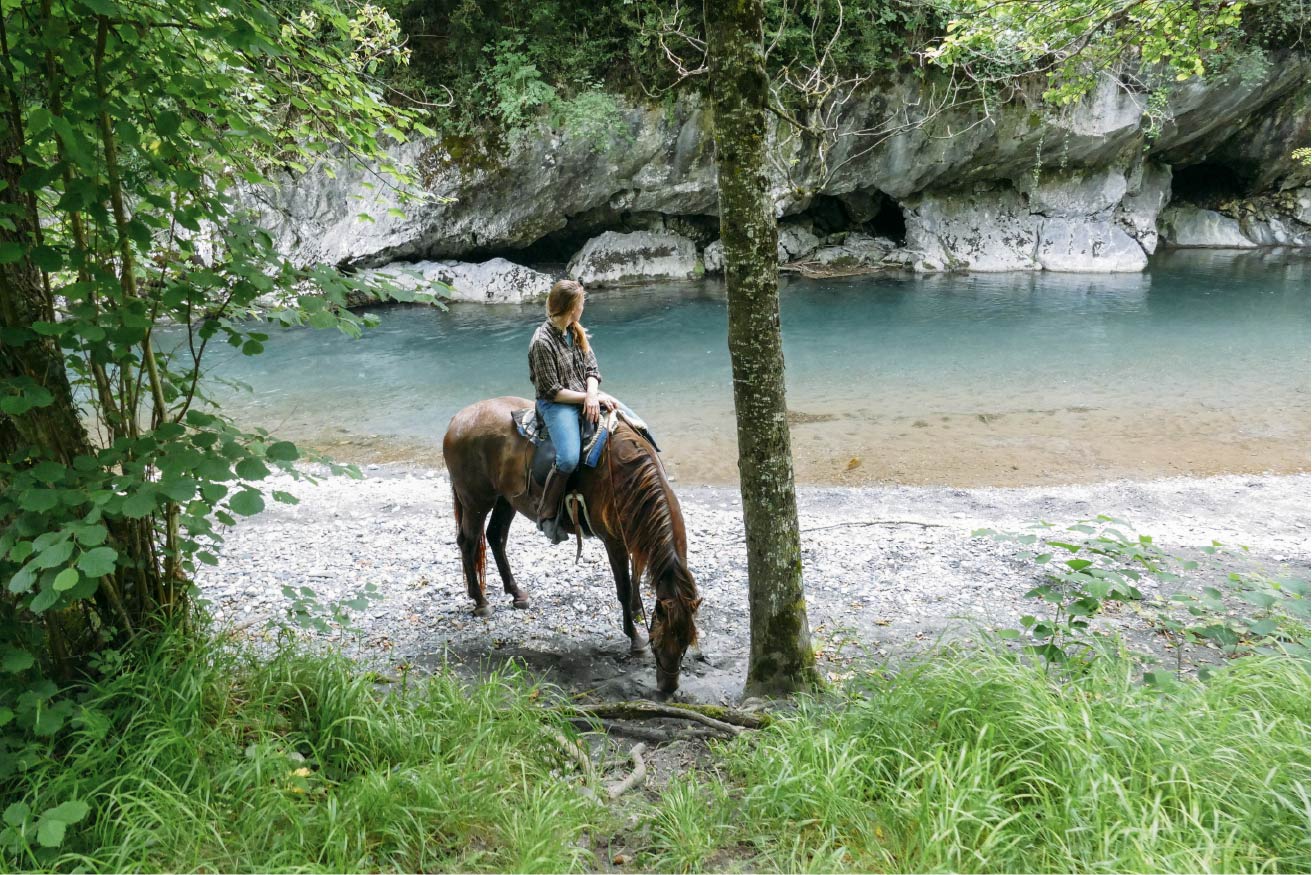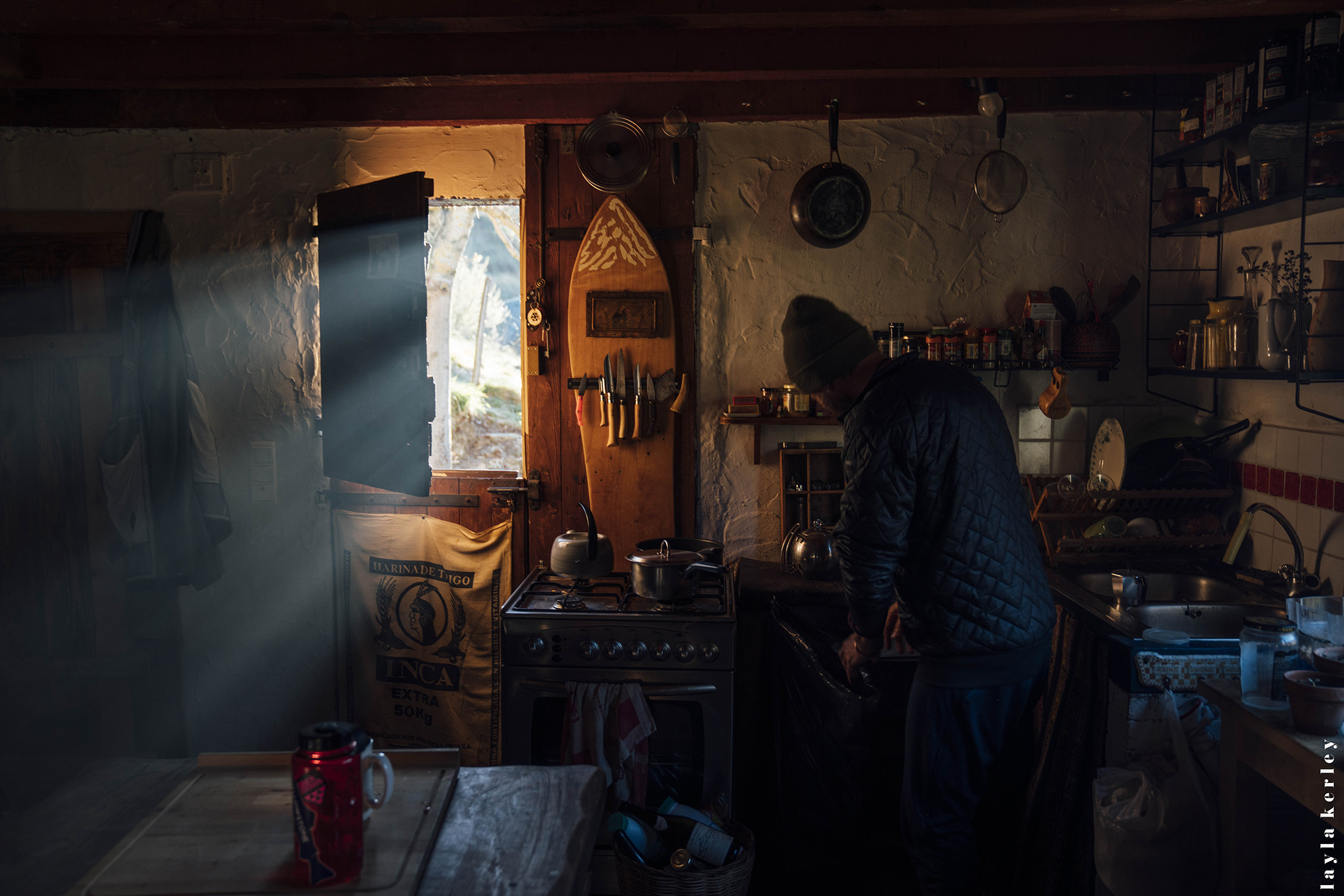Bruno Compagnet leads us through the lost world of a Dolomite canyon. His eyes were wide open as he blindly followed his friend Eric Girardini through a jumble of rocks and vegetation.
Winter on snow and the rest of the year in the water. I have built my life around this changing element which, in many ways, reminds me of human nature. Often calm and gentle, it can transform into something terribly powerful and destroy anyone who fails to read the signs or makes a simple error of judgment. There is a caressing aspect to it as it always adapts to the terrain, but it is also a source of power which eventually wears down the hardest rocks and destroys the strongest dams. It is an element of life, ever-changing, perpetually transforming. It is movement.
For all these reasons, added to the experience I have gathered over the course of many seasons, I approach this kind of practice with great fervour, respect, also sometimes fear. When the conditions are right, I feel like I am entering a divine temple, far more ambitious than any ever built by homo sapiens.
To the east of the San Martino Massif is a long valley dotted with canyons. It is a sublime place with rocky peaks emerging from deep green forests. Its stratified architecture, the pine trees colonizing every ledge and its impressive limestone cliffs diving down into the main river create an oppressive atmosphere. It is one of the remotest and wildest places in the Dolomites. Eric Girardini spent much of his youth exploring these mountains, climbing them in summer and skiing them in winter. I met him in the snow, at a not so distant time when off-piste skiing was prohibited and heavily fined in these mountains. The place was a haven for a group of initiate skiers whose playground was spoilt within a few years by the legalization of their practice and the advent of social media.
Eric now works as a guide and when I received his message (thank you social media!) inviting me to join him for the descent of a canyon (long and difficult, but one of the most beautiful in the area according to Eric), I didn’t hesitate a single second.
The day was dawning as we followed the long black snake of asphalt lazily unfolding along the peaceful valley we were descending. Despite the cup of pure Arabica fuel I had swallowed, I was just slowly waking up listening to Eric reminisce about the couloirs he had skied the previous winter. He went on to tell me the story of an encounter he had once made in the hamlet we glimpsed in the distance. A man had offered him a coffee and told him his life story: the war, his father murdered by the Germans who had shot a bullet in his head in front of his 8-year-old son, depopulation and loneliness…
The sun had now lit up the surrounding peaks. In the morning coolness, we got ready on a small car park by a nice hanging bridge. It was hot… Sweat was trickling straight down my spine and into my butt crack. My nose was dripping to the rhythm of my footsteps. We climbed up a path overgrown with vegetation, including a kind of elephant grass which reached halfway up my thighs.
“It should be somewhere around here…”
Eric leant forward to get a better look, then took a few steps down. To enter the canyon, we started rappelling down the south side of a ravine littered with tree trunks and loose boulders.
The clear sound of a piton being driven into the rock to secure an unreliable natural anchor echoed inside my head like the ring of an antediluvian bell.
Illuminated by the diffuse light of the rising sun, time passed without us having even started on the canyon itself. Looking up to the top of this amphitheatre of rocks and greenery felt like being immersed at the heart of a lost world worthy of a Jules Verne novel. The energy of the place was impressive. Whether solid or liquid, the forces at work here could have destroyed us in the blink of an eye. Just then, I caught sight of a graceful spiral created by a couple of butterflies. Small coloured dots whirling around a column of light plunging towards the rumbling of white water.
A first easy jump and a short rappel put an end to any possibility of going back. We were crossing a natural and psychological frontier. This kind of canyon is like taking LSD, once you’ve started, there’s no going back. You can’t say: “That’s it, I’m done. It was good, but I’ve had enough now.” I watched the splashing on the surface of the water, about ten metres below my feet. Jumping from this height is not much, except when there’s a rock wall on each side and a two-metre margin error…
In places, the sunlight started reaching the dimly lit cliffs, revealing trees and cyclopean rocks clinging to the vertical chaos of the canyon. Eric attacked the S. According to him, this is “the passage” in which the canyon concentrates all the force of the water. It was an extremely slippery and several metre-long S-shaped chute which gave me a serious battering. I then had to escape the roaring water to reach a belay stance to the right where a thirty-metre long pendulum abseil awaited me. My emotions were all over the place, but the setting and ethereal beauty of the moment transcended me. I tapped Eric’s shoulder and thanked him.
“Wait till you see the lower part! You’re gonna love it! »
